Technical documentation doesn’t have to be a hassle if you know what you’re doing. But, if you’re just starting, chances are that you don’t.
You’re probably winging a lot of stuff, don’t really keep written records, and aren’t the best at keeping all this data in the same place for later use.
Well, it’s time to change that!
This article will explain the six types of technical documentation you should own, regularly revise, and share with your team somewhere readily available for reading and updating.
Keep reading if you’re ready to take your technical documentation to the next level!
User Guides
User guides might be the most important out of all product documents.
Since the primary goal of such user guides is to educate the users, it’s easy to see why companies must invest time and effort into creating high quality documentation for their products.
User guides documents explain the parts of a product or service, how these parts function, and the best way to use them.
The iPhone product manual, for example, it is a user guide because it explains the parts of a phone, in this case, iPhone X.
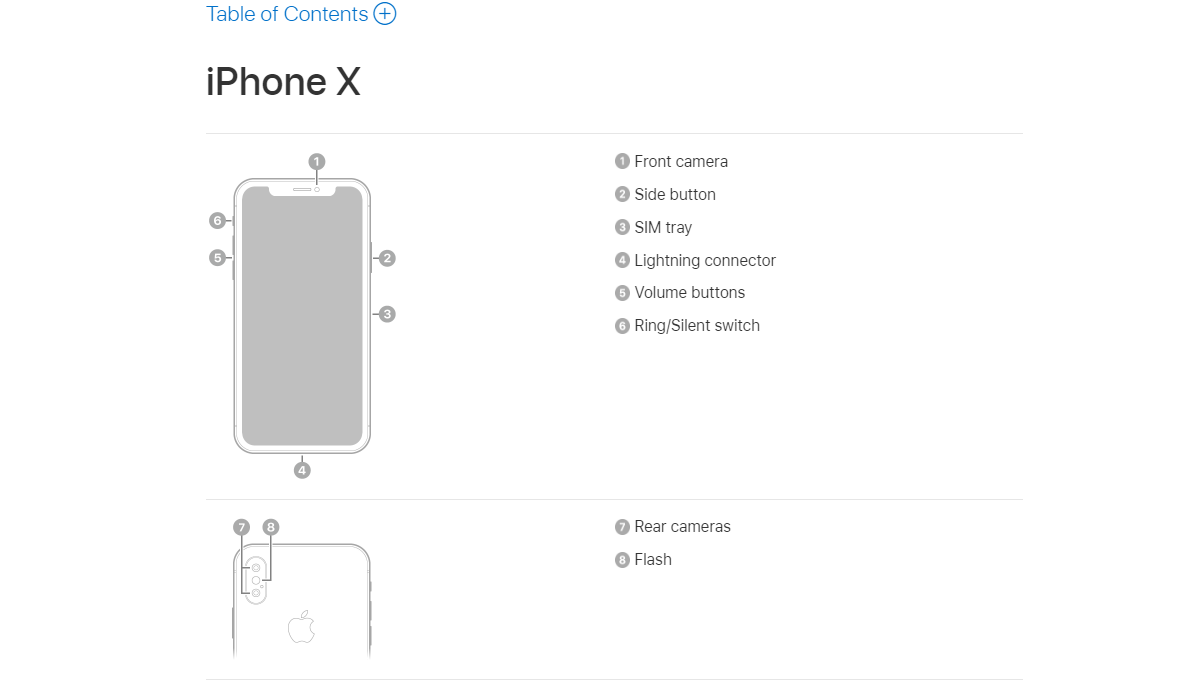
The simple illustration shows six features on the front of the phone and two on the back, indicating where to find things like the side button, SIM tray, or the volume buttons.
These things are beneficial to a user who’s never used an Apple product before.
Other than part explanation, a user guide helps the customer understand how to use the product by giving detailed and simple-to-follow instructions.
For example, Apple gives two options of turning Dark Mode on and off.
Such in-depth instructions for all features will take a while to compile and edit, but you’re set for life once you do.
After that, all you have to do is update the files whenever something changes regarding the product at hand, which should be easy.
If you’re thinking about sharing your product manuals with the customers, use technical documentation software like Archbee.
You need to have an option to make the data readily available to all your customers, allowing them access whenever they have an internet connection.
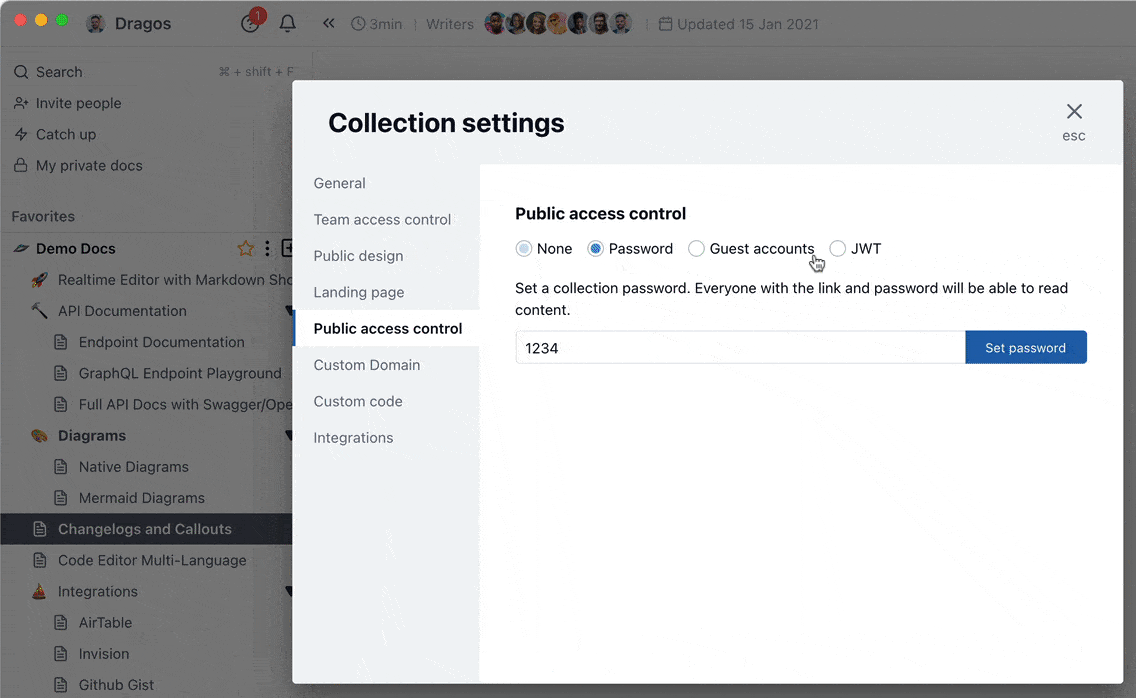
If you don’t do this digitally, you’ll have to keep printing manuals and instructions, which are subject to change.
After a year or two, you’ll have more than a couple of versions of the manuals, which is just not sustainable.
Good software will allow you to share and update product manuals easily. If you want to notify your customers, they’ll see the update when visiting the knowledge base. That's why you should have a well-developed internal knowledge base.

That way, you’ll ensure everyone stays up-to-date and gets the most out of your product.
The customers who visit your documentation page will see when the last updates happened, which will help them get all the news.
When there is an update to your files, your team can receive notifications through a communication app integrated with your product of choice, like Slack and Archbee.
API Documentation
Application Programming Interface (API) documentation explains the protocols needed to build and integrate application software. API documentation is a critical part of technical documentation, particularly for software developers and other technical users.
One of the key benefits of API documentation is that it can help developers to save time and effort when integrating different systems. By providing clear and comprehensive information on how to use an API, documentation can reduce the time and effort required to understand the system, troubleshoot issues, and integrate with other systems.
In other words, it helps you determine how you can connect a program with a computer or another program.
Therefore, it’s something your end-users will need if they want to integrate your product with another application they already use.
Archbee shares its API with the users on the website, allowing them to understand how to quickly retrieve content by its document ID. Now, with Archbee you can easily get document as markdown or html.

API documentation is also something your team must have if you want them to keep their work uniform and always have something to fall back on. Here are the best practices you can follow in order to help your team use and integrate the API effectively.
Stripe, the payment software company, has a great documentation site that they constantly update.
The API section is filled with valuable information on how their clients can use the API to make the most of the software.
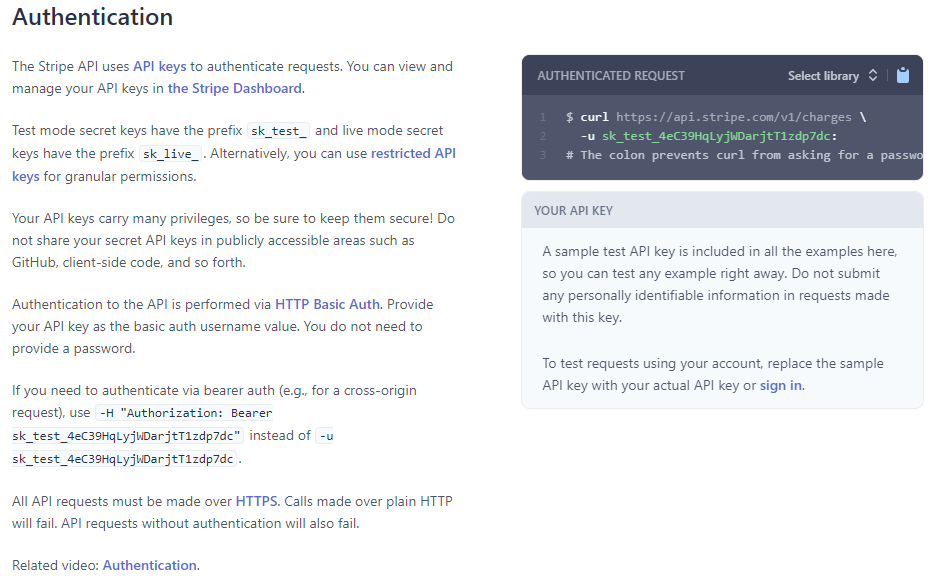
The articles explain how the users can use API, but each document contains links to different articles that offer more information on specific topics, like a good company wiki - best practices when creating a corporate wiki.
The site also offers related videos, meaning you get additional information in a different media format, which some users might prefer.
Similarly, Google Docs offers information on API through different content types. The company includes a short video that explains everything you can automate through API on Google Docs.
Source: Google Workspace on YouTube
Google briefly introduces different features in the introductory video.
However, they also offer more videos that can help users interested in finding out more.
The materials include a quickstart, developer guides, and reference docs.
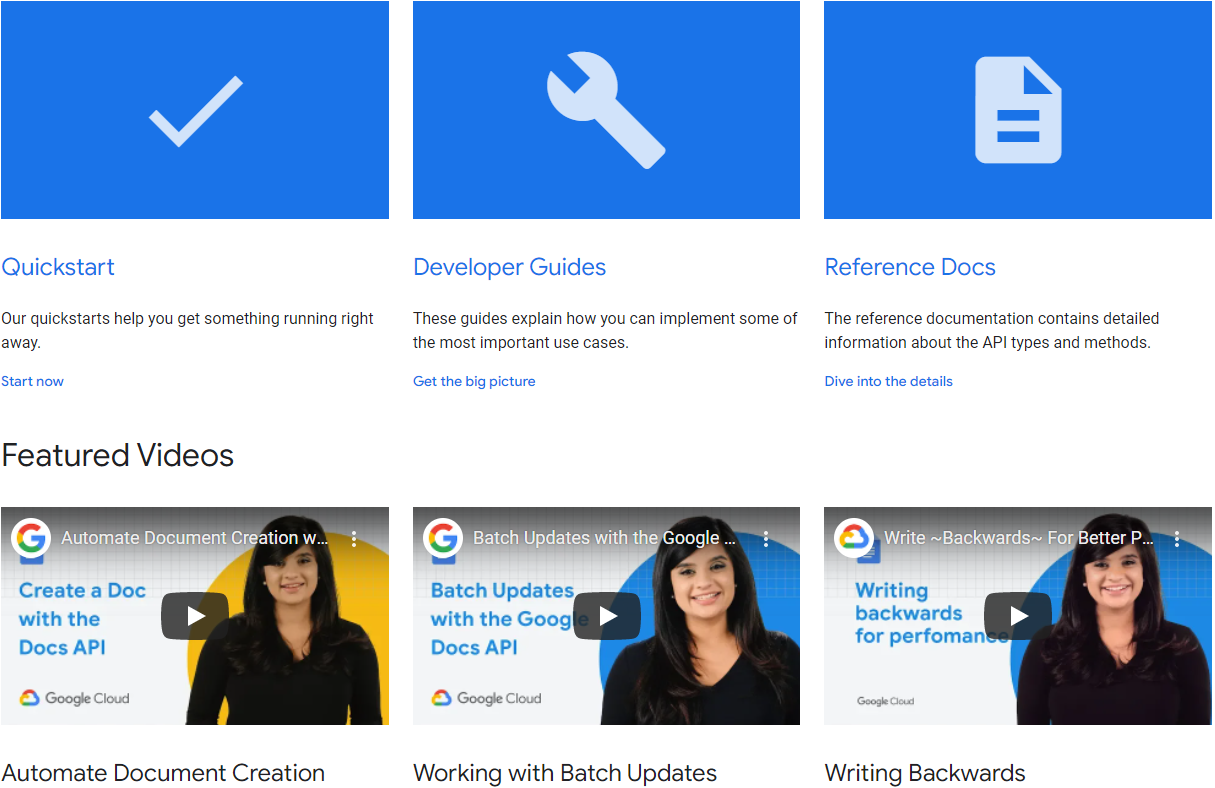
Google’s navigation is easy and lets you find what you’re looking for easily.
When you create and upload your API documentation, try to follow in their footsteps and make it simple to find information. We prepared for you the ultimate guide on how to write api documentation.
In summary, API documentation is important in technical documentation because it helps developers to save time and effort when integrating systems, improves the quality of software development, and standardizes development practices.
By providing clear and comprehensive information on how to use an API, documentation can enhance the productivity, efficiency, and quality of software development.
SDK Documentation
Software Development Kit (SDK) documentation describes the bulk of tools developers use to create apps for a specific program or platform. SDK documentation is an essential part of technical documentation that provides information on how to use a software development kit (SDK) to build software applications.
This type of toolkit is similar to code samples and tutorials, except it contains a bunch of files that work together to help create new apps. SDK documentation is important because it provides developers with the information they need to effectively use the SDK and build high-quality applications. It typically includes documentation on the SDK's installation, usage, and configuration, as well as reference guides for its functions, libraries, and other components.
When developers have to create apps for a program or a platform, they use this type of technical documents to understand the set of APIs used to create apps within the system.
All of this might sound very similar to API. Kristopher Sandoval explains the difference between the two perfectly by describing SDK as the building blocks and API as the language of the application at hand.

Once you see the two document types as having different purposes for app building, it will be a lot easier to create them.
Clevertap explains that SDK includes files like app documentation, tutorials on using the app, code library, debugging options, and APIs.

One of the key benefits of SDK documentation is that it can help developers to build more complex and sophisticated applications. By providing a clear understanding of the SDK's capabilities and how to use them, documentation can enable developers to create more advanced applications and features.
It can also help to reduce the time and effort required to build applications, as developers can refer to the documentation to troubleshoot issues and find solutions. Therefore, you have a lot to include if you want your SDK to be complete and helpful to readers and those who use your app.
After that, all you have to do is share the files with your users and team. Let’s see how Dropbox does it!
The company has a developer documentation page explaining the product’s features and offers SDKs.

Before you see the SDK, you have to choose the developer language you use.
After all, the kit is designed for a specific language or program, which means there’s a distinction between iOS and Android SDKs. When you decide to share your SDK files, consider using the same menu type to narrow down the choices and make things easier for the readers.
In summary, SDK documentation is important in technical documentation because it helps developers to build more complex and sophisticated applications, reduces the time and effort required to build applications, and improves collaboration and knowledge-sharing among developers.
By providing clear and comprehensive information on how to use an SDK, documentation can enhance the productivity, efficiency, and quality of software development.
Release Notes
Release notes are technical documents you create and publish when launching a product or its update.
Such technical documents contain details about what the product is and does.
In case of an update release note, the documentation explains what new thing you’ve incorporated, how the new feature works, or what kind of a bug you’ve managed to fix.
Since the updates and bugs aren’t a part of the initial release, it’s only natural that you’ll have to create release notes and inform your customers, users, and the team of the issues you’ve found and solved.
The business communication platform Slack posts its release notes on the official website, giving customers a brief description of the issue, and announcing they’ve solved it.

Many companies do the same and write a good knowledge base article or create a new update document in their knowledge base to inform users of updates and solved issues. Here are 5 tips for creating a winning knowledge base.
The release notes provide more information for your users and can come in handy when you have bugs that affect a lot of your customers.
Archbee recently went live with version 3 of the software, sharing the exciting news on Twitter in hopes of the update reaching more customers.
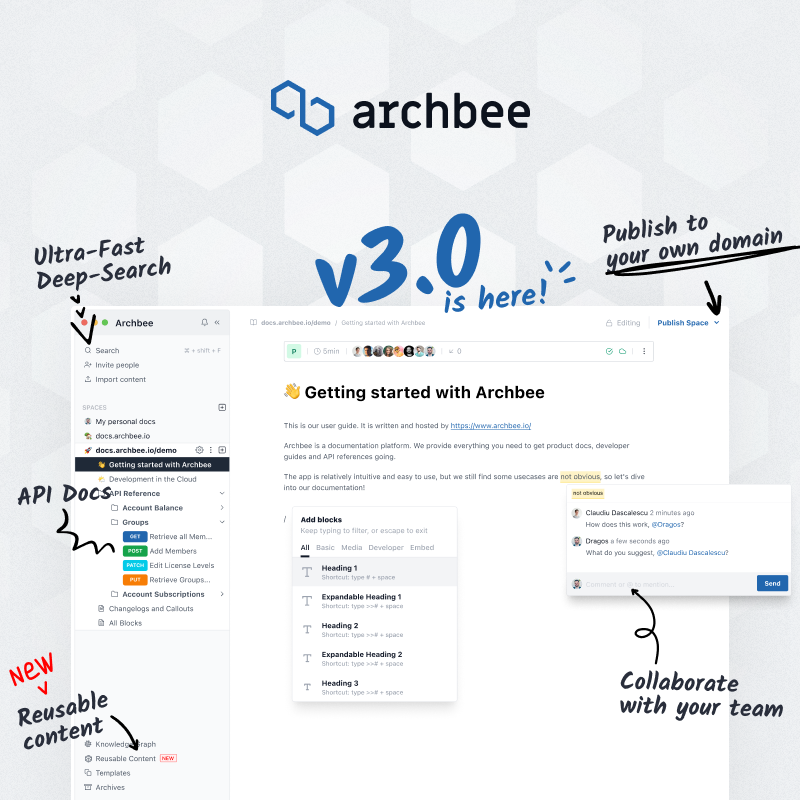
Of course, the update is visible on the website, too, ensuring that customers can’t miss the new and improved version of the software.
In addition to that, companies often post about the ongoing bugs on their Twitter accounts, notifying followers when the issue is solved.
A simple sentence or two is enough to keep your users informed and updated on everything new with your product, which is the point of release notes.
You don’t have to go all out and write essays on the issue a bug has caused you and the steps you took to fix it.
Just explain the type of problems caused by the bug, announce it’s fixed, and preferably apologize to customers.
Voilà, your release note is ready!
Market Requirements Documentation
Market Requirements Documentation (MRD) explains the customers' wants from the specific product or service.
This form of technical documentation aims to understand what kind of a product and features you should invest in before starting to work on it. We develop an article on why technical documentation is important if you are a B2B SaaS startup.
In other words, you’ll write down who your target audience is, list the current competitors, and explain why customers would want your product.
Writing down the things potential users can get out of using your product will help make the benefits clear.
Shoot the Curl Marketing posted a great template to show people what MRD should look like.

They suggest adding an exec summary, describing the market problems, and noticing the opportunity that arises from the market.
Then, they recommend delving into the target audience and finding your buyer persona, listing use cases, and writing down details about the product that make it perfect for the target market.
The easiest way to write MRD is to collect customer feedback on the current market and understand what kind of problems they’re experiencing and what features would help them solve those issues.
You can collect customer insights through online surveys and questionnaires. On top of that, you can use sites like Twitter to research the market.

Twitter’s developer page shares APIs you can use to search through their archive and find user conversations about specific topics that interest you.
Through these APIs, you’ll get closer to realizing what your target audience thinks about your competition and the current offers.
Then, you will understand the market needs and will be able to meet them with your product.
If all the competitor apps don’t offer a function that the customers need, it’s a clear sign you should develop a feature that can help solve this issue.
That way, you’ll win some of the customers over.
User Requirements Document
User requirements documents give details about what the users expect from your product or service.
This type of document details everything the product is supposed to do for the end-user.
The educational organization Udacity explains that companies usually write user requirements in a non-technical language as they are meant for end-users and not developers.
Source: Udacity on YouTube
Udacity calls URD “a way for the analysts, the developers to communicate with the customers,” as opposed to system requirements, which are a lot more formal and technical.
The video compares the two, showing a stark difference in the details and language used for user and product requirements.
While the former is simple, neutral, and to the point, the latter details steps needed for the single user requirement to come true. Try avoid these common mistakes in writing technical documentation.

Therefore, when creating URDs, focus on the customers and ensure they can understand the document.
But also, make sure that your user and system requirements lead to the same goal. URD is something you should remind yourself of throughout the process of creating and delivering the product.
WOWswap recently announced that they had redesigned their interface to suit the URD.

Clearly, the old interface didn’t match the user requirements and didn’t deliver on what was promised.
So, the company had to invest time and effort into redesigning and creating something that worked towards providing the customers with what they initially promised.
Such things happen because URDs often serve as a contractual agreement. After all, through this documentation, you promise what your software will offer the customers who invest in it.
When you have a URD in place, your end-users know what they will get from the software. If they demand more than promised, you can use this document for help.
On the other hand, your customers can turn to this documentation to prove their point if they get less than promised.
Why is important to have more types of technical documentation?
Having multiple types of technical documents is essential in today's fast-paced and constantly evolving technological landscape. While traditional user manuals and technical guides are still valuable, they may not be sufficient to meet the needs of all users or to address all aspects of a product or service.
Technical documents can improve accessibility and usability for users. Different users have different learning styles, preferences, and requirements when it comes to accessing and processing information. Some may prefer video tutorials, while others may prefer step-by-step written instructions.
Different types of documentation can serve different purposes and address different aspects of a product or service. For example, while a user manual may provide detailed information on product features and how to use them, an API documentation may focus on technical specifications and requirements for integrating with other systems.
By using tools such as wikis, knowledge bases, and project management software, companies can create and manage documentation more efficiently, reduce duplication of effort, and foster collaboration between technical writers, developers, and other stakeholders.
In summary, having multiple types of technical documentation is important because it improves accessibility, provides more comprehensive coverage of a product or service, and streamlines internal processes.
Conclusion
Technical documentation can be rewarding if you know what you’re doing. What we mean by this is knowing what type of technical documents you should create and how.
For example, you should know that you should do market research to create an MRD, which you can then use to create a URD.
After that, you can develop your product and generate the documentation you should publish alongside it.
Make sure that your documentation contains all the necessary information for users and developers to get the most out of your product. Happy writing!











